Choose the correct head torch for you
During winter and autumn and on overnight trips you’ll need a light to see where you’re going and what you’re doing. This gear guide tells you all you need to know about head torches to help you choose the perfect one for you.
Head torches are a vital piece of kit during winter months. They offer a hands-free solution with the light shining where you look which is far more useful than a handheld torch. Trying to hold a torch whilst setting up your tent, trail running or looking at a map, for example, is tricky to say the least!
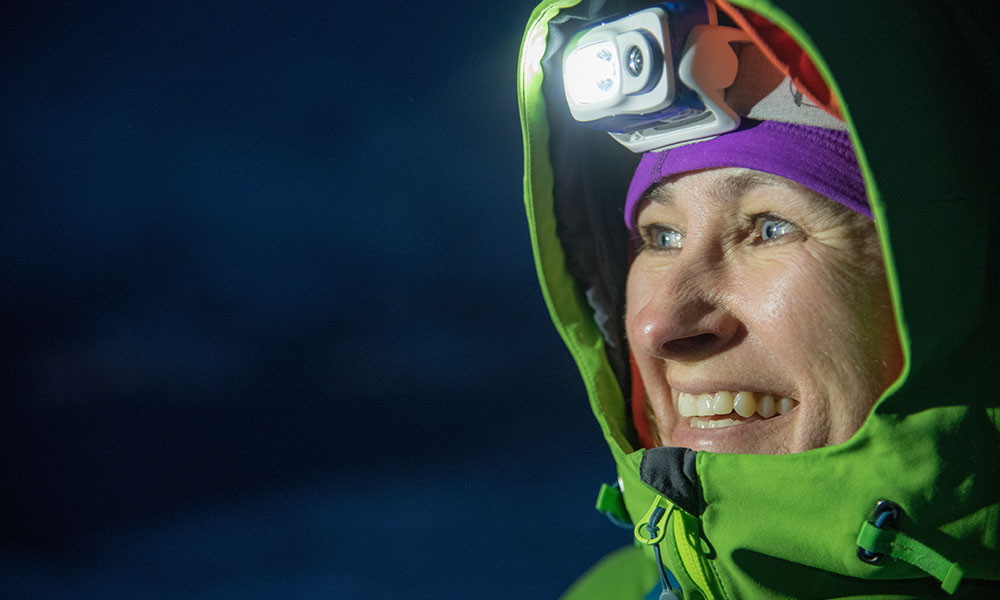
Weight, brightness, ease of use, cost, comfort and stability are all key factors when deciding which head torch to purchase, with brightness and battery life both increasing significantly over the past few years.
Let’s look at some key features for your next head torch….
Brightness

Generally, the quicker you are moving or the more technical it is underfoot the more lumens you will need. A running headtorch, particularly for the trails, should have a minimum of 350 lumens although 500 is recommended. A camping head torch or one for more general use, will be just fine with less. To summarise the numbers of lumens needed for different activities:
- Emergency use: 10 to 50 lumens
- Every day, urban and campsite use: 100 to 250 lumens
- Outdoor sport use and navigation: 300 to 600 lumens
- Mountaineering, technical trail running and skiing: 500 to 900 lumens
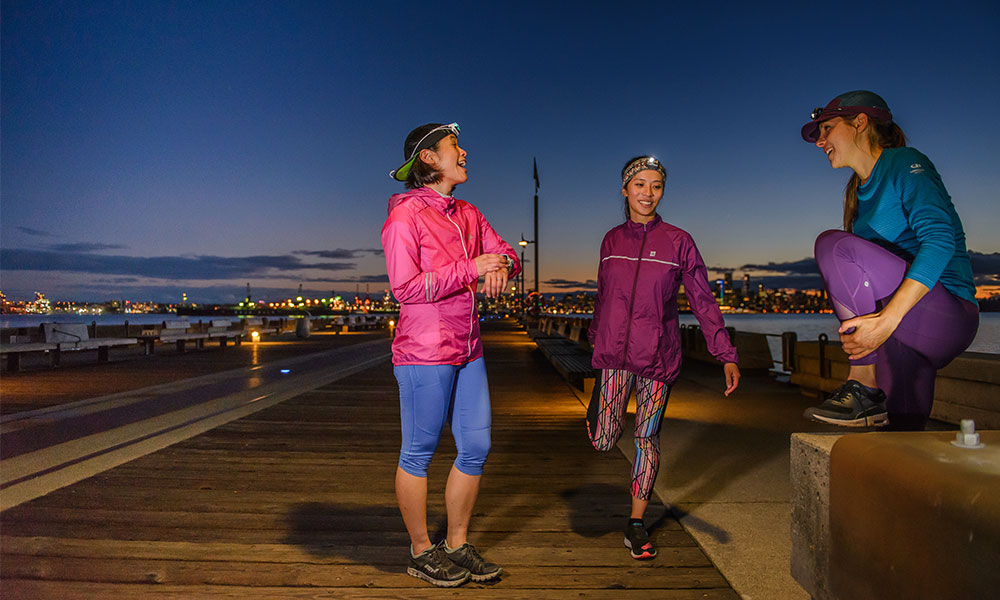
Don’t forget brightness is offset by power consumption, so a very bright head torch at full power won’t last as long as something less bright. The good news is, higher power models usually have a larger battery to compensate, although they may come at a premium price.
Many head torches offer different brightness and light settings by pressing a button or turning a dial, e.g. low, medium, high. This allows you to extend the battery life if lower lumens are sufficient. Petzl’s Reactive Lighting also helps to address the brightness/burn time balance. More on that later.
Battery Life
How long you need the battery to last will depend on what you are doing and the brightness you need balanced with the size of the battery. A rechargeable head torch will not only help save the planet and your pocket but is more efficient at delivering power than standard alkaline batteries, especially at low temperatures, it’s also easy to carry a spare battery pack. Most rechargable head torches can be charged using a micro usb.
Many head torches also have a reserve function, a small amount of light that lasts long enough to get you back home or to another battery.

Beam
On LED head torches, the distance the beam will reach depends on the brightness of the LED along with the focus pattern. Choosing a suitable beam pattern for your intended use is important. If running in the dark, trail runners typically need both flood and spot lighting for proximity/distance lighting while flood only lighting is sufficient for more casual use around the campsite or reading.
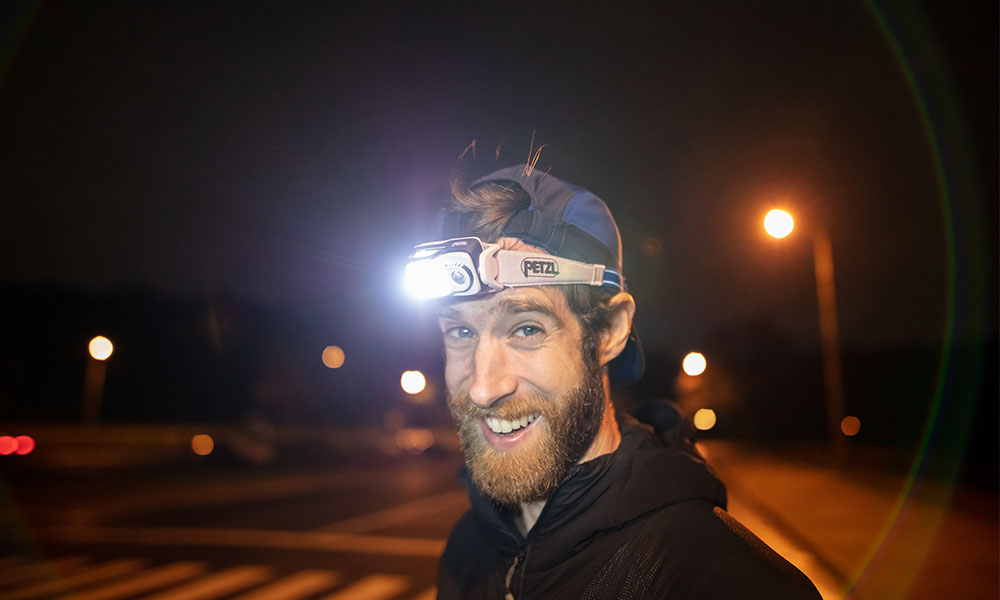
Head torches will often have a spot focused LED for long distance with a second wide angle LED for proximity/flood lighting. Or, they may have several balanced LEDs to produce a very even wide beam pattern at different brightness levels. Have a think about the activities you’ll need your head torch for and whether you’ll need to see long distance, wide angle or close up or even all three!
Reactive Lighting
Reactive Lighting is a technology developed by Petzl where the head torch senses the amount of light bouncing back and adjusts the brightness produced. Aiming the head torch into the distance activates full brightness and gives longer reach but when checking a map, the light output is reduced helping to reduce glare while also increasing burn time and making it perfect for all situations.
Once you’ve tried it you’ll never go back! Not having to manually change the brightness with cold, often gloved hands is a complete game changer!
Weight
Head torches weighing much more than 200g can feel cumbersome and uncomfortable on your head, especially if you’re wearing them for long periods. How much weight you’re prepared to carry on your adventure with you is personal preference. Many organised events require you to carry a head torch as part of the essential safety kit. In this instance, weight plays a crucial factor choosing a head torch.

Even for lighter models, thinking about how you want the weight distributed is important and there’s generally two main designs. An ‘all in one’ unit with the light and battery at the front or a ‘split’ design with the light on the front and battery on the rear. There are advantages to both including how compact the head torch feels and its balance on the head, much will depend on personal preference, comfort and the battery size needed
Durability
For active outdoor use in the UK some degree of water resistance is essential to ensure your head torch keeps the rain and moisture at bay. A torch’s waterproofness is measured using an IPX rating, from IPX1 to IPX8, with a higher number representing a higher waterproof level. IPX4 is the minimum waterproof standard to consider, ensuring protection from splashing water from any direction. Some head torches are more durable than others and if you need your head torch to accompany you on the toughest of
adventures, look to see if it’s impact resistant.
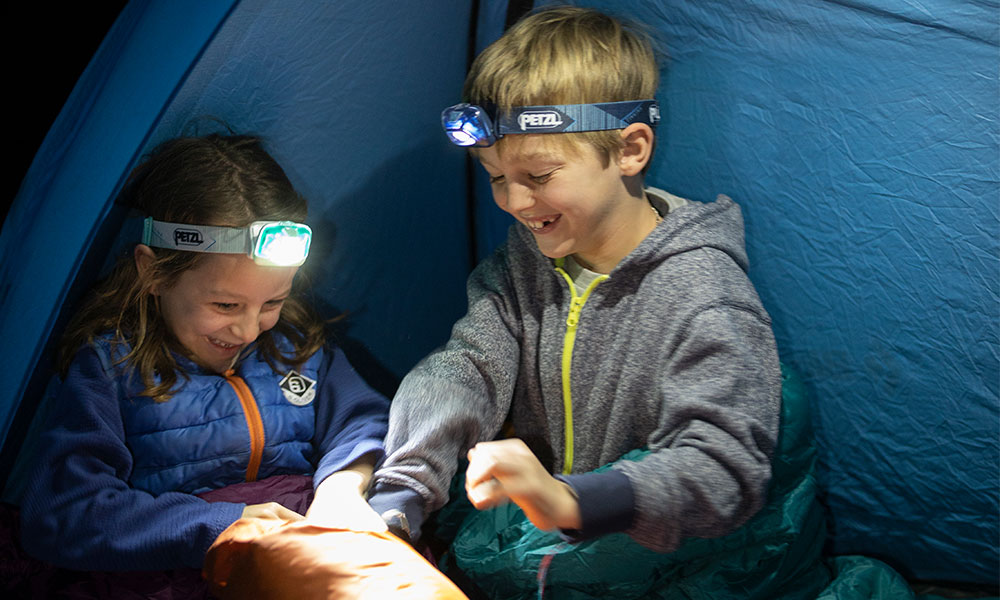
Comfort
Closely linked with ‘weight’ above is the overall comfort of your headtorch. Adjustable straps use varying combinations of elastic webbing, sweat bands and cord. Where possible, try on your head torch to make sure it feels comfortable for you and adjusts well for your head, hair and headwear. Your head torch shouldn’t jiggle around when you move, yet it shouldn’t be so tight that the strap leaves a mark.
Check how easy it is to turn on and off your head torch and switch between functions. You won’t want to faff around taking your gloves off when it’s blowing a gale! If this is something that will bother you, choose a head torch with reactive lighting so there will be no need to manually adjust settings.
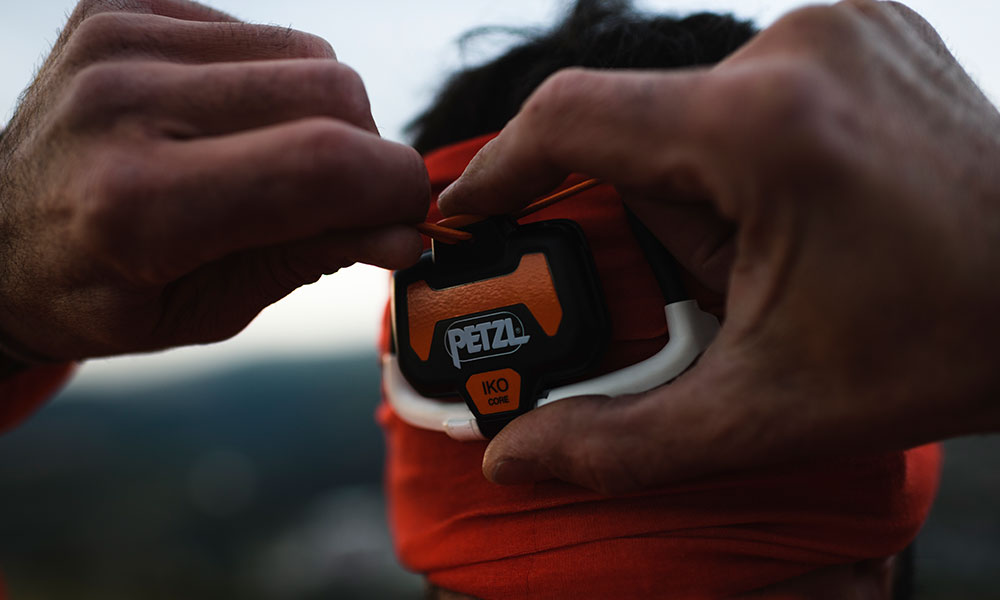
Price
Price plays a major factor in any purchase. If you’re after a durable, reliable head torch to use on all your epic adventures then you can expect the pay more than a head torch for occasional use. By spending a little bit more, you can land yourself a decent piece of kit which will come up trumps when enjoying your favourite activities.
Other features
A tilting function for the head torch beam can also be very useful in mist or driving rain and snow to avoid glare or more simply to give a better pool of illumination for your needs.
Another feature you may want to add to your wish list is a red or coloured light mode. This is useful if you venture out in a group or camp with others. A red light function is kinder to eyes and is less likely to wake your tent buddy up in the middle of the night.
A strobe or flashing light mode is mainly used for signalling, making it ideal for seeking aid.
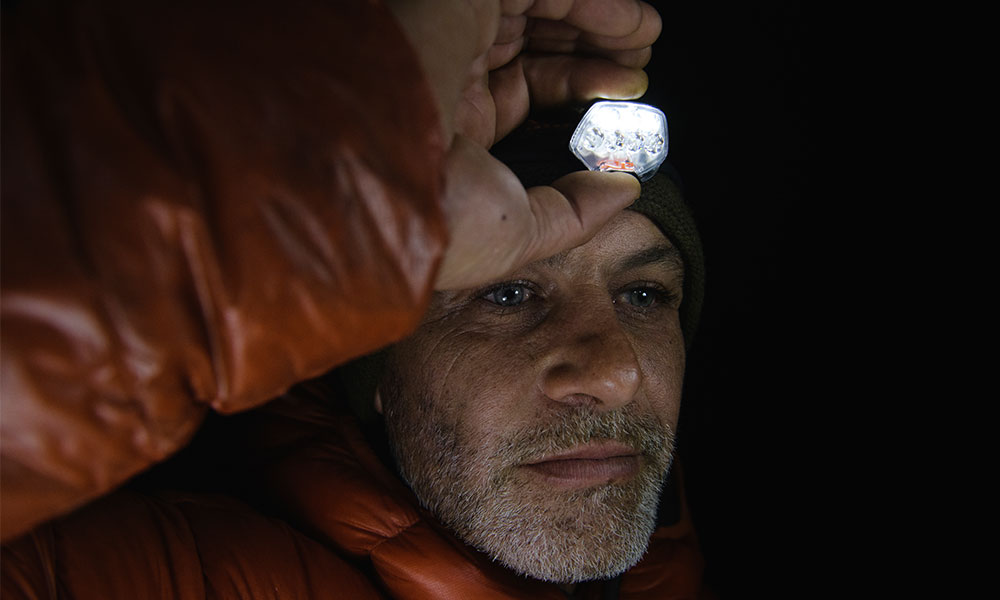
Our top picks
Here are our top picks for head torches suited to certain outdoor activities:
- Occasional camping – OS Headtorch – Easy to use with a long battery life. The red light is ideal for reading and whilst preserving night vision.
- Regular hiking and camping adventures – Petzl Actik Headlamp – 450 lumen brightness. The phosphorescent reflector helps you find it in the dark, and the red lighting preserves night vision. Compatible with the CORE rechargeable battery (sold separately)
- High-intensity sports like trail running – Petzl IKO Core Headlamp – Rechargeable headlamp combines multiple technologies to provide 500 lumens at a total weight of only 79 g. Works with AAA batteries too.
- For emergencies – Petzl e+LITE Emergency Headlamp – Rechargeable with 40 lumens of continuous or strobe lighting (red or white) to be seen. A whistle is attached to it and it can be stored with its batteries for up to 10 years.
If you’re an avid camper and you’re looking for additional lighting, lanterns make the perfect tent companion. Hook them up or lay them on the ground and you’ll have continuous light to help you pack, read, cook and enjoy time out in the wilderness.




